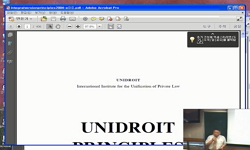After China carried out the policy of economic reform and opened its gate to foreign intercourse, market competition in the industry became keen. This caused serious unemployment problems and it threatened economic advance and social stability in Chin...
http://chineseinput.net/에서 pinyin(병음)방식으로 중국어를 변환할 수 있습니다.
변환된 중국어를 복사하여 사용하시면 됩니다.
- 中文 을 입력하시려면 zhongwen을 입력하시고 space를누르시면됩니다.
- 北京 을 입력하시려면 beijing을 입력하시고 space를 누르시면 됩니다.
부가정보
다국어 초록 (Multilingual Abstract)
After China carried out the policy of economic reform and opened its gate to foreign intercourse, market competition in the industry became keen. This caused serious unemployment problems and it threatened economic advance and social stability in China. If Chinese government can't settle these problems, economic development can't be expected in the future.
This paper focuses on degrees of contribution of three major industries to national economy, analyzes employment structure, predicts changes in employment by industries after China's joining WTO and helps Korea easily access and approach to China.
This study proves that the degrees of contribution of three major industries to GDP in China differs through by industries. GDP component proportion in primary industry shows a downward tendency. In secondary industry it is at a standstill and in tertiary industry it goes on increasing. In the area of employment, after the reform and gate opening, tertiary industry makes great progress and produce output value and employment rate in tertiary industry ascend rapidly. On the contrary, employment rate in primary and secondary industry descends. In the field of foreign investment, foreign capitals imported in primary industry are few. Most of them are invested in secondary industry. The amount of foreign capitals imported in tertiary industry have been slowly increasing. But China's recent joining to WTO accelerates the investment in tertiary industry.
After the economic reform, large amount of residuary labor force switched into the labor in industry segment at the early stage was created. From late 1990's, however, increasing unemployment in industry segment caused by industrial structure adjustment such as government-owned enterprise reform made it hard to absorb agricultural labor. Instead of industry segment, tertiary industry embarked itself in absorbing agricultural labor from late 1990's and much of agricultural residuary labor force was switched to tertiary industry labor. This tendency is expected to continue and increase for the time being. Secondary industry in which manufacturing occupies 90% have been decreased from 1998. Among 15 branches of trade in manufacturing 11 branches except sewing, leather, timber processing, electric machine and communication facilities are losing their laborer. It means that there has been a decrease in resources intensive field and traditional branches while labor-intensive maintains its power. Laborers in tertiary industry are increasing each year and the percentage of employment in traditional branches is the highest. The rate of employment increase is higher in emerging branches. Therefore continuous development is expected in these branches.
Synthetically, primary industry tends to sink in occupancy rate and the percentage of employment, secondary industry shows the tendency of gradual fall, whereas tertiary industry will develop and increase and ultimately become the core industry which is going to have strong effect on Chinese industrial development.
목차 (Table of Contents)
- Ⅰ. 서론
- Ⅱ. 산업별 국민경제에 대한 공헌
- Ⅲ. 산업별 취업구조의 변화
- Ⅳ. WTO 가입 후 산업별 취업구조에 대한 영향
- Ⅴ. 결론
- Ⅰ. 서론
- Ⅱ. 산업별 국민경제에 대한 공헌
- Ⅲ. 산업별 취업구조의 변화
- Ⅳ. WTO 가입 후 산업별 취업구조에 대한 영향
- Ⅴ. 결론
참고문헌 (Reference)
1 "關於促進我國第3次産業發展的戰略思考" 第21卷 (第21卷): 2002.6
2 "服務貿易對我國 GDP增長貢獻的實證硏究" (第3期) : 2004年
3 "我國第三産業就業面臨的問題及對策選擇" 제19권 (제19권): 2003
4 "我國第3次産業發展滯後的原因與對策" 第9卷 (第9卷): 2002
5 "我國弟三産業就業構造分析" 15 (15): 2004
6 "加快市場開放進程推動我國第3次産業發展" 第23卷 (第23卷): 2002
7 "加入WTO對我國就業的影向與對策建議 中國工業經濟" 2001
8 "加入WTO對中國農業的影響" (第10期) : 1999年
9 "入世對中國農業的影響" 2000
10 "中美關於加入WTO的協議對中國農産品貿易的影響 中國農村經濟" 2000
1 "關於促進我國第3次産業發展的戰略思考" 第21卷 (第21卷): 2002.6
2 "服務貿易對我國 GDP增長貢獻的實證硏究" (第3期) : 2004年
3 "我國第三産業就業面臨的問題及對策選擇" 제19권 (제19권): 2003
4 "我國第3次産業發展滯後的原因與對策" 第9卷 (第9卷): 2002
5 "我國弟三産業就業構造分析" 15 (15): 2004
6 "加快市場開放進程推動我國第3次産業發展" 第23卷 (第23卷): 2002
7 "加入WTO對我國就業的影向與對策建議 中國工業經濟" 2001
8 "加入WTO對中國農業的影響" (第10期) : 1999年
9 "入世對中國農業的影響" 2000
10 "中美關於加入WTO的協議對中國農産品貿易的影響 中國農村經濟" 2000
11 "中國利用外資 理論 效益 管理" 北京大學出版社 2002
12 "中國戰略構想" 절강인민출판사 2002
13 "中國工業年鑑(2001)" 통계출판사 2002
14 "中國工業發展報告(2002)" 經濟管理出版社 2002
15 "中國加入WTO各行業前景分析" 經濟日報出版社 2000
16 "中國入世硏究報告 進入WTO的中國産業" 社會科學文獻出版社 2000
17 "中國21世紀議程農業行動計劃" 中國農業出版社 1999
18 "World trade in 2000-Overview" 2001
19 "WTO與我國農業政策改革" (第10期) : 1999年
20 "WTO與中國産業升級" 中國審計出版社 2000
21 "US Department of Agriculture International Agricultural Baseline Projections to 2007" 1998
22 "China's Agricultural Trade : Patterns and Prospects" Califonia Univ. Press 1998
23 "21世紀中國經濟發展戰略" 中國城市出版社 2002
24 "2003年中國經濟展望" 中國計劃出版社 2002
25 "2002年中國社會形勢分析與豫測" 社會科學文獻出版社 2002
26 "2002中國工業發展報告" 經濟管理出版社 2002
27 "2002中國工業發展報告" 經濟管理出版社 2002
28 "2002 2003中國宏觀經濟形勢分析與豫測" 國經濟出版社 2003
동일학술지(권/호) 다른 논문
-
- 韓國外國語大學校 外國學綜合硏究센터 中國硏究所
- 임원빈
- 2004
- KCI등재후보
-
- 韓國外國語大學校 外國學綜合硏究센터 中國硏究所
- 구기보
- 2004
- KCI등재후보
-
- 韓國外國語大學校 外國學綜合硏究센터 中國硏究所
- 오규열
- 2004
- KCI등재후보
-
- 韓國外國語大學校 外國學綜合硏究센터 中國硏究所
- 강준영
- 2004
- KCI등재후보
분석정보
인용정보 인용지수 설명보기
학술지 이력
| 연월일 | 이력구분 | 이력상세 | 등재구분 |
|---|---|---|---|
| 2027 | 평가예정 | 재인증평가 신청대상 (재인증) | |
| 2021-01-01 | 평가 | 등재학술지 유지 (재인증) |  |
| 2018-01-01 | 평가 | 등재학술지 유지 (등재유지) |  |
| 2015-07-28 | 학술지명변경 | 외국어명 : Journal of Chinese Studies and Sinology -> Journal of Sinology and China Studies |  |
| 2015-07-28 | 학술지명변경 | 외국어명 : China Studies -> Journal of Chinese Studies and Sinology |  |
| 2015-03-26 | 학술지명변경 | 외국어명 : 미등록 -> China Studies |  |
| 2015-01-01 | 평가 | 등재학술지 유지 (등재유지) |  |
| 2011-01-01 | 평가 | 등재학술지 유지 (등재유지) |  |
| 2009-01-01 | 평가 | 등재학술지 유지 (등재유지) |  |
| 2007-08-22 | 학회명변경 | 영문명 : INSTITUTE OF CHINESE STUDIES, Center for International Area Studies, Hankuk University of Foreign St -> INSTITUTE OF CHINESE STUDIES, Hankuk University of Foreign St |  |
| 2006-01-01 | 평가 | 등재학술지 선정 (등재후보2차) |  |
| 2005-01-01 | 평가 | 등재후보 1차 PASS (등재후보1차) |  |
| 2003-01-01 | 평가 | 등재후보학술지 선정 (신규평가) |  |
학술지 인용정보
| 기준연도 | WOS-KCI 통합IF(2년) | KCIF(2년) | KCIF(3년) |
|---|---|---|---|
| 2016 | 0.28 | 0.28 | 0.27 |
| KCIF(4년) | KCIF(5년) | 중심성지수(3년) | 즉시성지수 |
| 0.31 | 0.27 | 0.492 | 0.19 |





 RISS
RISS KISS
KISS






